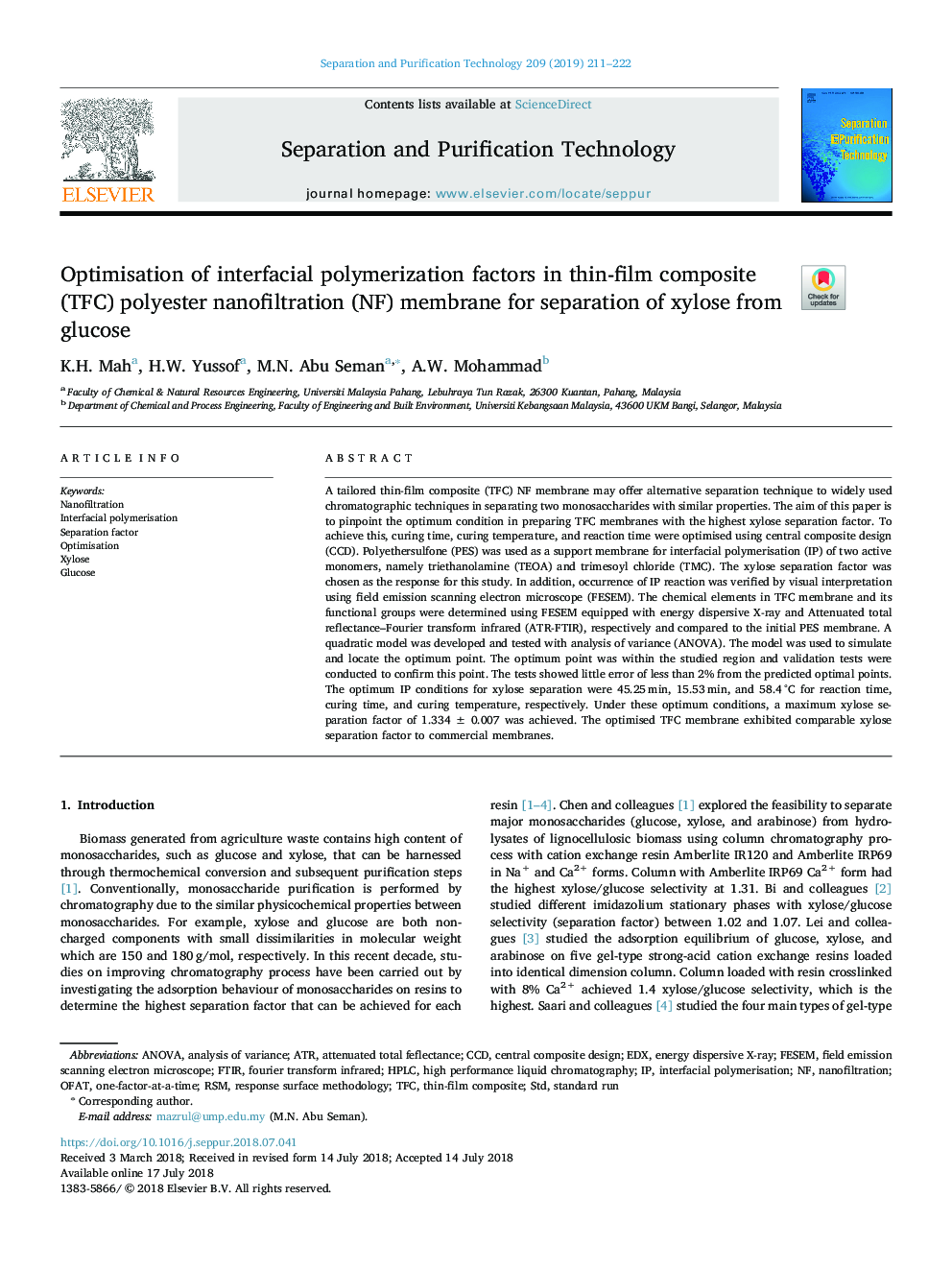| Article ID | Journal | Published Year | Pages | File Type |
|---|---|---|---|---|
| 7043468 | Separation and Purification Technology | 2019 | 12 Pages |
Abstract
A tailored thin-film composite (TFC) NF membrane may offer alternative separation technique to widely used chromatographic techniques in separating two monosaccharides with similar properties. The aim of this paper is to pinpoint the optimum condition in preparing TFC membranes with the highest xylose separation factor. To achieve this, curing time, curing temperature, and reaction time were optimised using central composite design (CCD). Polyethersulfone (PES) was used as a support membrane for interfacial polymerisation (IP) of two active monomers, namely triethanolamine (TEOA) and trimesoyl chloride (TMC). The xylose separation factor was chosen as the response for this study. In addition, occurrence of IP reaction was verified by visual interpretation using field emission scanning electron microscope (FESEM). The chemical elements in TFC membrane and its functional groups were determined using FESEM equipped with energy dispersive X-ray and Attenuated total reflectance-Fourier transform infrared (ATR-FTIR), respectively and compared to the initial PES membrane. A quadratic model was developed and tested with analysis of variance (ANOVA). The model was used to simulate and locate the optimum point. The optimum point was within the studied region and validation tests were conducted to confirm this point. The tests showed little error of less than 2% from the predicted optimal points. The optimum IP conditions for xylose separation were 45.25â¯min, 15.53â¯min, and 58.4â¯Â°C for reaction time, curing time, and curing temperature, respectively. Under these optimum conditions, a maximum xylose separation factor of 1.334â¯Â±â¯0.007 was achieved. The optimised TFC membrane exhibited comparable xylose separation factor to commercial membranes.
Keywords
OFATSTDTFCATRCCDEDXFESEMenergy dispersive x-rayOptimisationFourier transform infraredanalysis of varianceANOVAResponse surface methodologyRSMCentral composite designFTIRSeparation factorField Emission Scanning Electron MicroscopeNanofiltrationInterfacial polymerisationThin-film compositehigh performance liquid chromatographyHPLCXyloseGlucoseOne-factor-at-a-time
Related Topics
Physical Sciences and Engineering
Chemical Engineering
Filtration and Separation
Authors
K.H. Mah, H.W. Yussof, M.N. Abu Seman, A.W. Mohammad,
